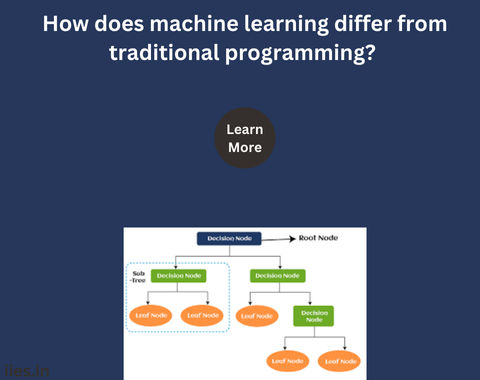
In the rapidly evolving world of technology, machine learning (ML) and traditional programming are two distinct yet interconnected paradigms. Both have their unique methodologies, applications, and implications for the future. Understanding how machine learning differs from traditional programming is essential for grasping the advancements in computer science and their impact on various industries.
Supervised learning is one of the most common types of machine learning. In this approach, the algorithm is trained on a labeled dataset, meaning that each training example is paired with an output label. The goal is for the model to learn a mapping from inputs to outputs that can be applied to new, unseen data. Supervised learning can be further categorized into:
Unsupervised learning deals with unlabeled data. The algorithm tries to learn the underlying structure of the data without guidance on what the output should be. Common techniques include:
This approach is a hybrid of supervised and unsupervised learning. It uses a small amount of labeled data and a large amount of unlabeled data. The labeled data helps guide the learning process, which can improve the performance of the model when it’s difficult or expensive to obtain a fully labeled dataset.
Reinforcement learning is inspired by behavioral psychology. An agent learns to make decisions by performing actions in an environment to maximize some notion of cumulative reward. This type of learning is particularly effective for tasks where decision making is sequential, such as game playing, robotics, and autonomous driving.
To ensure that a machine learning model performs well on unseen data, it’s essential to evaluate and validate it. Common techniques include:
Feature engineering involves selecting, modifying, and creating new features from raw data to improve the performance of machine learning models. Good feature engineering can significantly enhance the predictive power of a model. This process may include:
Choosing the right model is crucial for solving a given problem effectively. Different algorithms have varying strengths and weaknesses depending on the nature of the data and the task. Commonly used models include:
Hyperparameters are settings that need to be specified before training a model, such as learning rate, number of trees in a random forest, or number of layers in a neural network. Tuning these hyperparameters is crucial for optimizing model performance. Techniques like grid search and random search are commonly used for this purpose.
Ensemble learning involves combining multiple models to improve overall performance. The idea is that by aggregating the predictions of several models, the ensemble can achieve better results than any single model. Common ensemble methods include:
Understanding these key concepts of machine learning provides a solid foundation for exploring and mastering the field. As the field continues to grow and evolve, staying updated with the latest advancements and continually practicing with real-world data will be essential for anyone looking to become proficient in machine learning.
Indian Institute of Embedded Systems – IIES